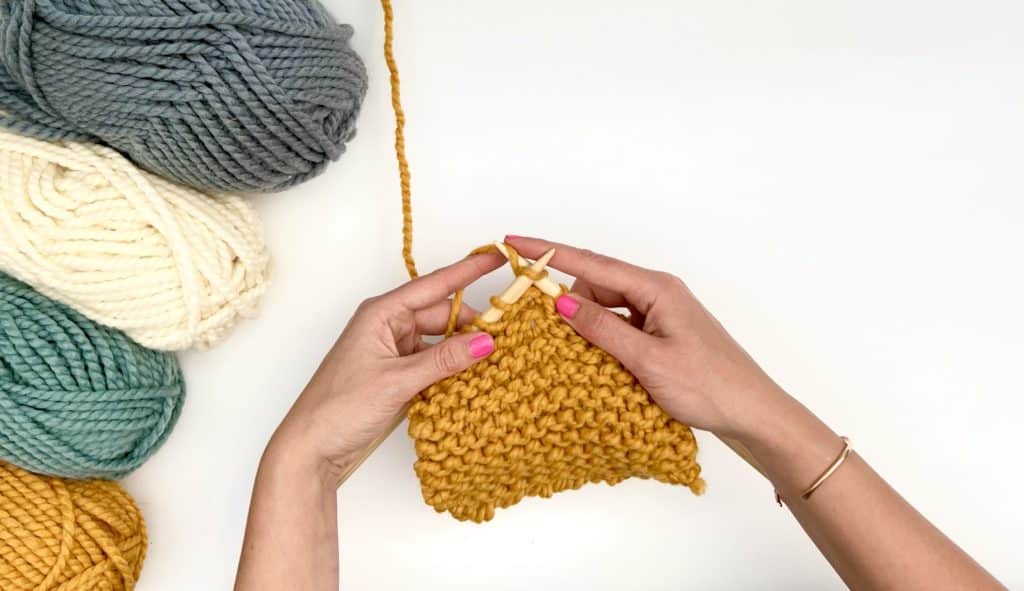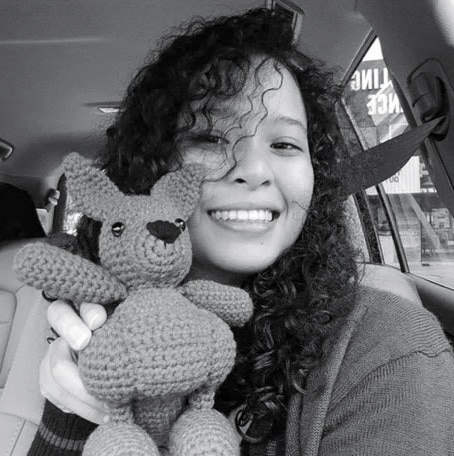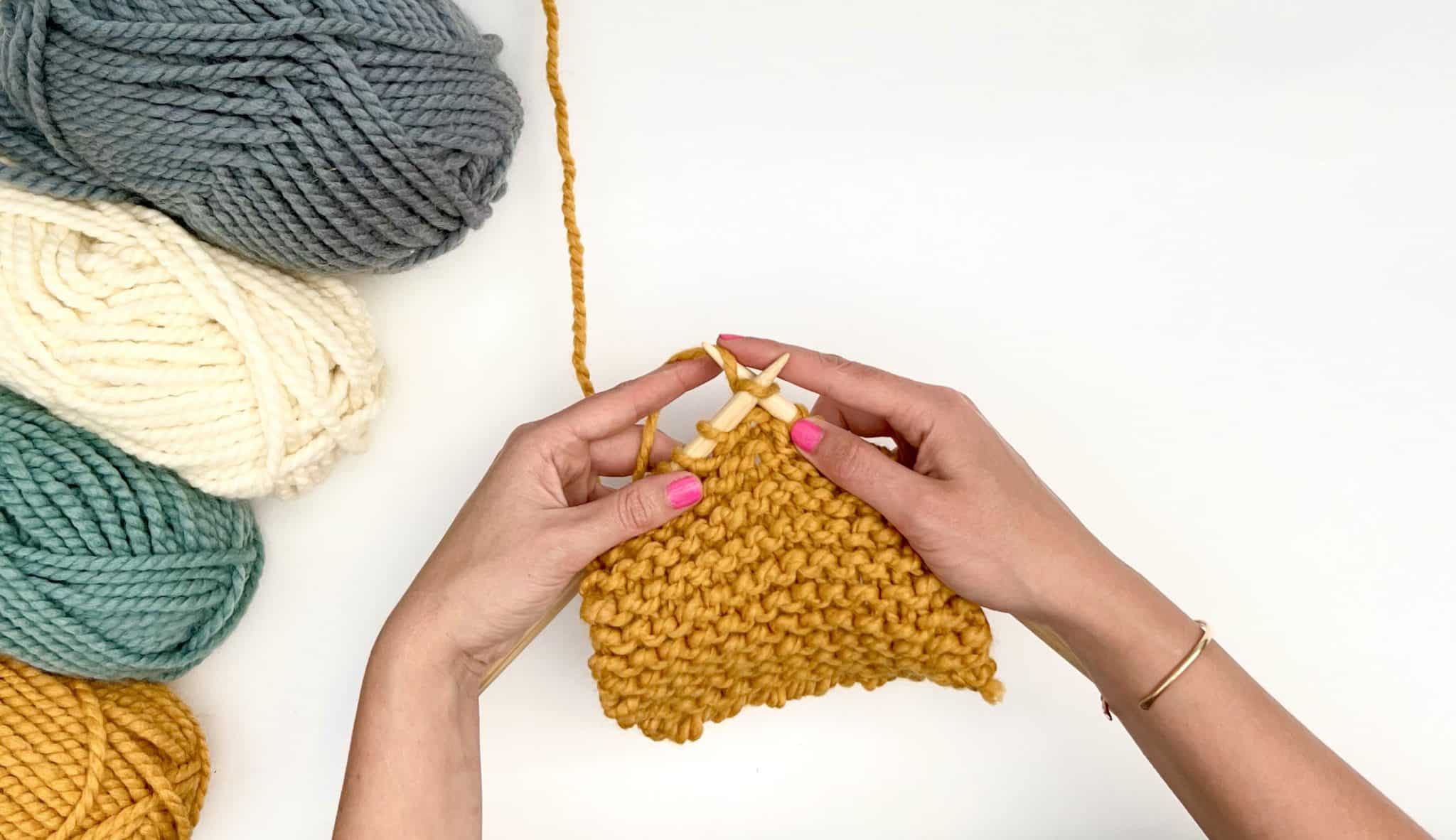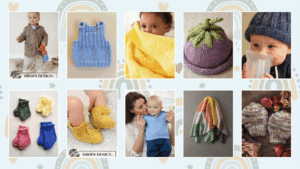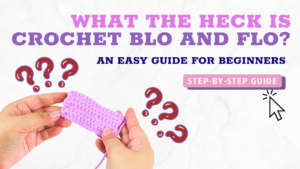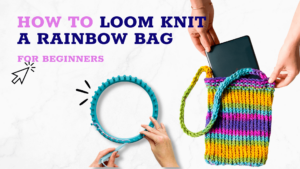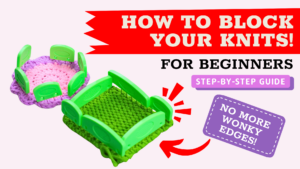Stuck in the yarn aisle, staring down a wall of alpaca and wool? It’s a classic knitter's dilemma. The choice boils down to a simple difference: alpaca is all about that silky, lightweight luxury, while wool is the durable, go-to classic we all love.
Your decision really hinges on what you’re making. Are you dreaming of a project with elegant drape, or do you need a sturdy, workhorse garment that will last for years?
Alpaca vs. Wool: The Ultimate Fiber Showdown
Alright, let's get into the nitty-gritty of the alpaca versus wool matchup. Think of this as your cheat sheet for understanding what makes each of these amazing fibers so special. Both are incredible natural materials, but they shine in different ways.
This visual gives a great at-a-glance look at the key differences in fiber fineness, warmth, and even their environmental footprint.

As you can see, alpaca fiber tends to be finer and packs more warmth for its weight. This makes it a fantastically efficient insulator without the bulk.
To help you decide at a glance, here’s a quick summary table that breaks down their core qualities.
Alpaca vs. Wool At a Glance
| Feature | Alpaca | Wool |
|---|---|---|
| Feel | Silky, smooth, and luxurious with a noticeable drape. | Can range from soft to rustic; known for its "spongy" elasticity. |
| Warmth | Exceptionally warm due to hollow core fibers; warmer than wool. | Very warm and a great natural insulator. |
| Lanolin | Hypoallergenic, contains no lanolin. | Contains lanolin, which can cause allergies for some. |
| Best For | Drapey shawls, luxurious cowls, lightweight sweaters, items for sensitive skin. | Sturdy sweaters, socks, hats, mittens, and durable outerwear. |
This table is just a starting point, of course. The real magic happens when you understand why these fibers behave the way they do and how to pick the perfect one for the project you have in mind.
Softness Feel and Hypoallergenic Qualities
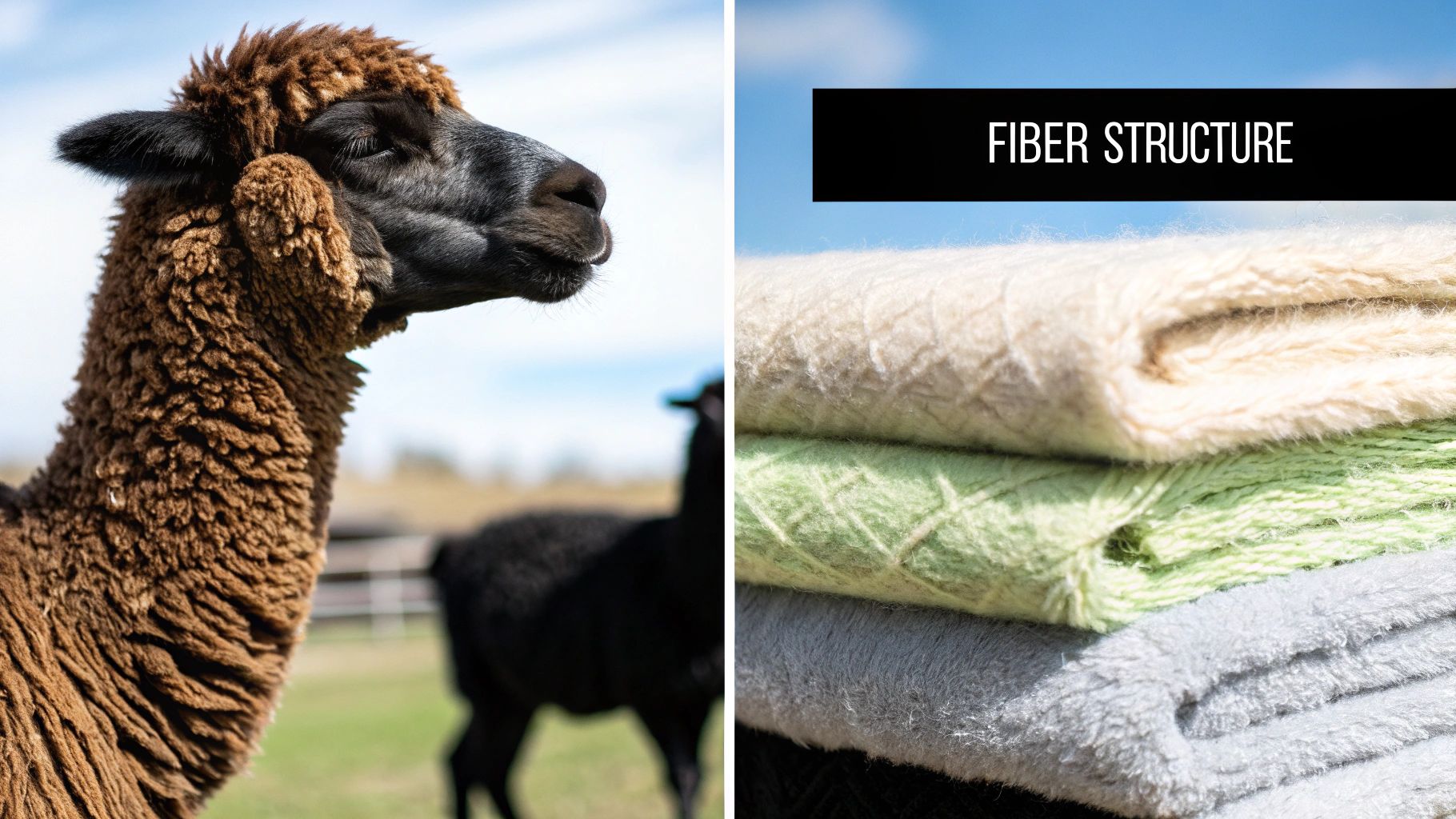
Let's dive into the touch test—what really matters when a yarn is going to be sitting against your skin. This is where the great alpaca versus wool debate gets personal.
Alpaca yarn is famous for its silky, smooth texture that just glides through your fingers. The fibers have a smaller, flatter scale, which means you get none of that "prickle factor" that can sometimes come with wool.
Better yet, it's naturally lanolin-free. Lanolin is the waxy grease found in sheep's wool that can be a major irritant for people with sensitive skin. Alpaca’s smooth fiber structure makes it feel incredibly soft and is a huge reason why it’s considered a hypoallergenic powerhouse.
On the other hand, don't count wool out! It comes in a massive range of textures, from sturdy and rustic to ultra-soft Merino that feels like a cloud. Just imagine making a super cozy hat like the ones in this hat knitting guide.
Warmth, Insulation, and Breathability
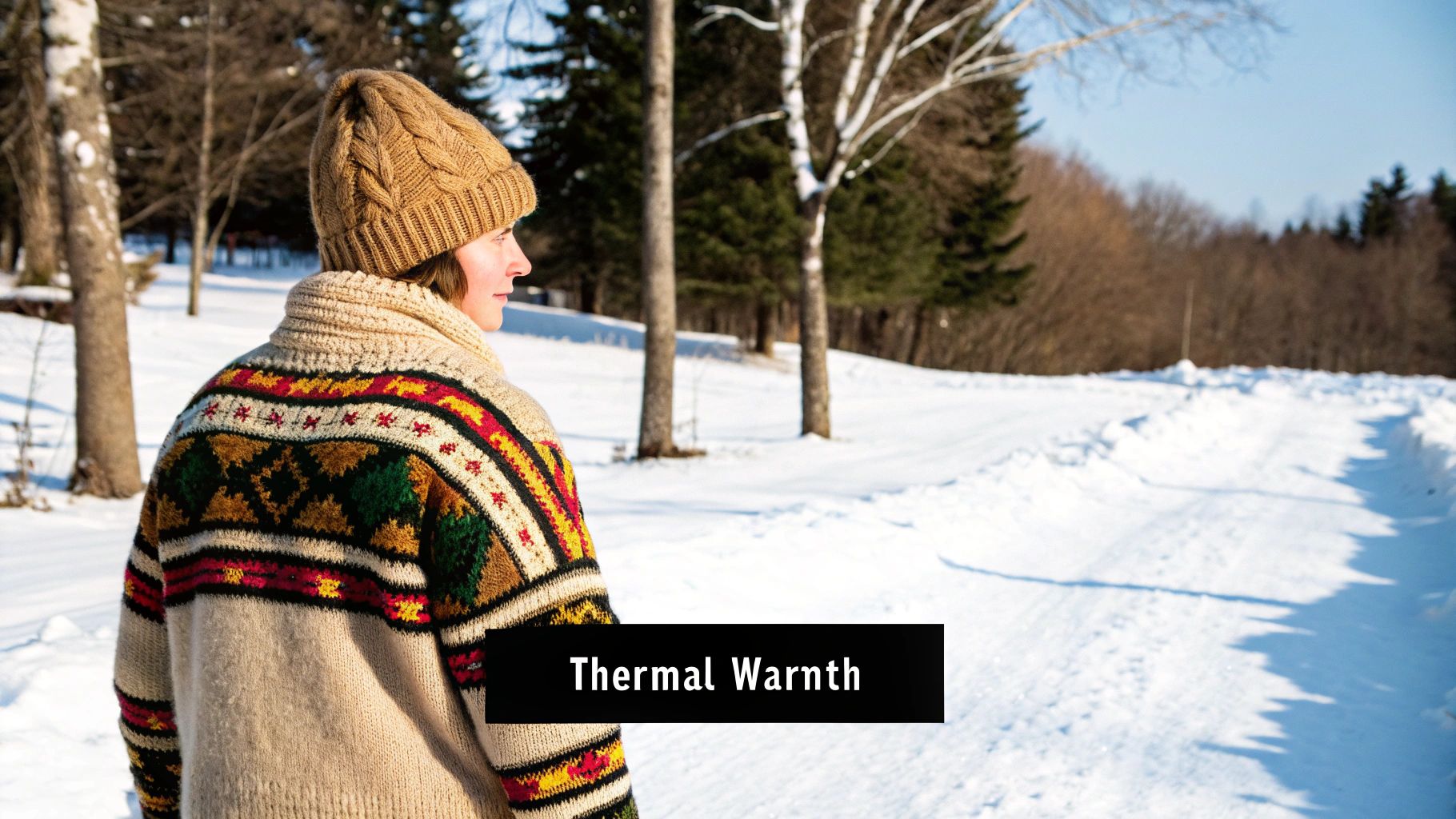
When you're trying to stay cozy, both alpaca and wool are warmth superstars, but they go about it in different ways. The magic of alpaca yarn comes from its unique fiber structure.
Alpaca fibers are medullated, a fancy way of saying they’re hollow inside. These tiny air pockets act as incredible insulators, trapping your body heat to keep you toasty warm without the heavy, bulky feeling. This structure is why alpaca garments can feel surprisingly lightweight yet provide exceptional warmth.
On the other hand, wool is a classic for a reason. Its fibers have a natural crimp, creating millions of tiny air pockets that also trap heat quite effectively.
Durability and How to Care for Your Fiber
When you pour so much love and time into your knitting projects, you want them to last! For pieces that will see a lot of action, wool is the undisputed champ of durability. Wool fibers have a fantastic "memory" that lets them stretch and bounce right back into shape.
This makes wool the perfect choice for items that get a lot of wear and tear, like socks, mittens, or a favorite everyday sweater. Alpaca is also a very strong fiber, but it has less springiness, allowing it to create a beautiful, flowing drape.
Always hand wash your alpaca and wool knits in cool water with a gentle, no-rinse wool wash. Never wring them out; just gently squeeze out the excess water and lay them flat to dry. Properly caring for your beautifully crafted items you can make is key to making them last.
What to Expect with Cost and Value
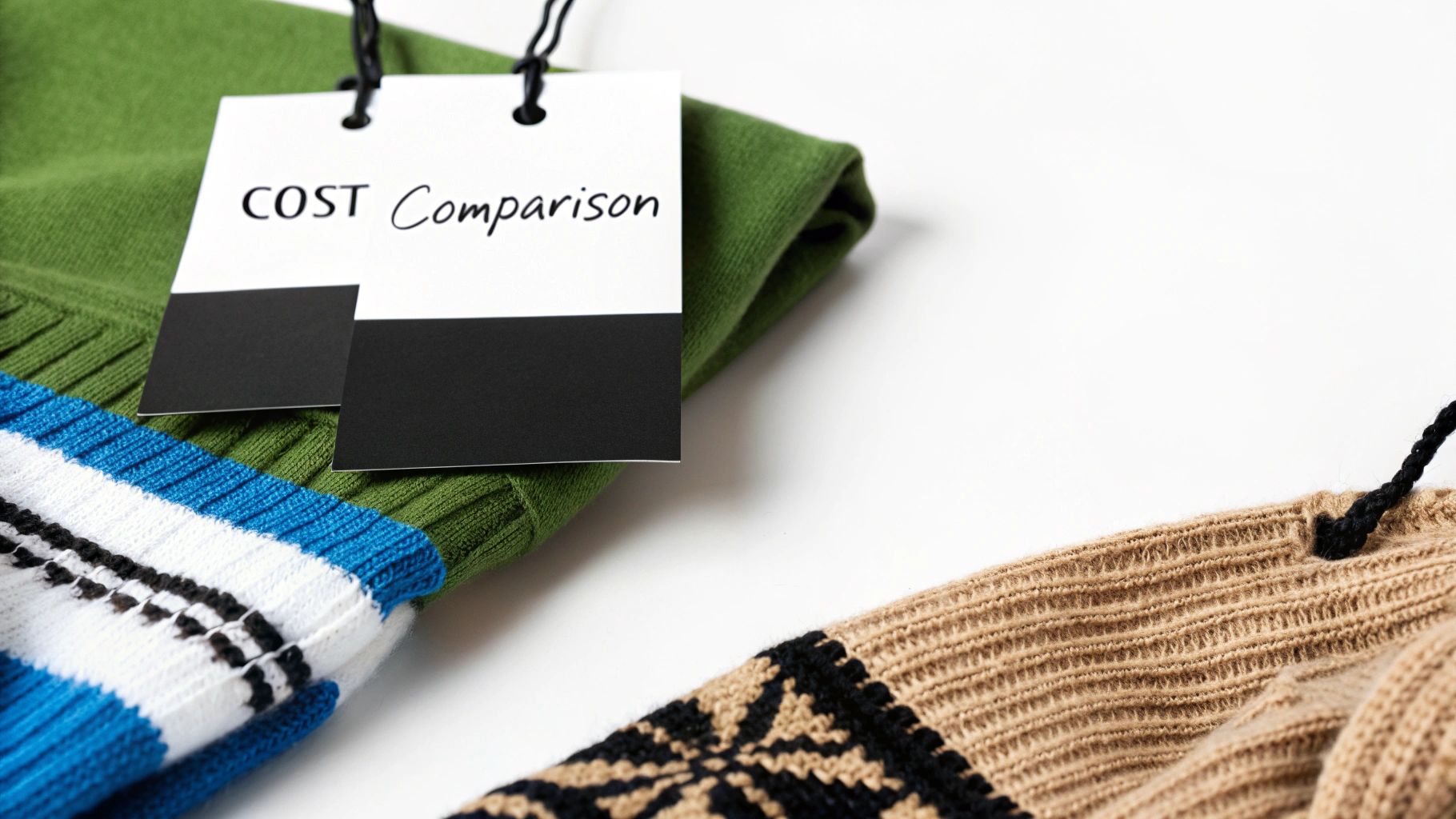
Let's talk about the price tag, because it’s a big part of choosing yarn. You’ll almost always notice alpaca costs a bit more, and that's because it's widely considered a luxury fiber. Its production is more limited, and those premium qualities like softness and warmth come at a higher price.
Wool, on the other hand, has a huge price range. The cost can swing dramatically depending on the sheep breed and how it was processed. This variety means you can find a wool yarn for just about any budget.
No matter which you choose, you're making an investment. Be sure you know how to store yarn to keep it safe. The global alpaca fiber market is a significant niche, and its lightness and softness are exactly why it commands higher prices. Explore more about the alpaca fiber market.
Choosing the Right Fiber for Your Project
So, after all that, which one should you choose? In the great alpaca versus wool showdown, it all boils down to what you’re planning to make.
If you’re dreaming up a buttery-soft scarf or a gorgeous shawl that needs an elegant, fluid drape, alpaca is your best friend. Its signature silky feel and incredible warmth-to-weight ratio are a perfect match for luxurious accessories that sit close to your skin.
On the other hand, if your project is a structured sweater or durable socks, classic wool is the way to go. Wool’s natural springiness helps garments bounce back into shape, making it practical even for things like An Captoe Boot Wool Tweed.
Ready to cast on your next project? Find beginner-friendly patterns, tutorials, and all the inspiration you need at Knitting.com. Explore our free resources and become a confident creator today! https://knitting.com
